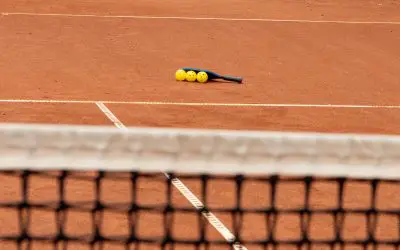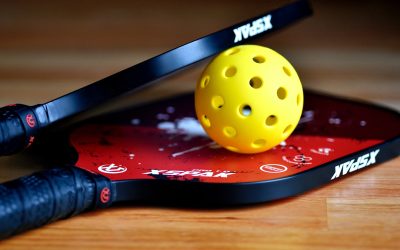Ever wondered how pickleball players get their ratings? It’s a question I get a lot, and it’s not as complicated as you might think. In fact, understanding pickleball rating systems can help you improve your game and compete more effectively.
The rating system in pickleball is designed to level the playing field, ensuring that players of similar skill levels are matched up against each other. It’s a brilliant way to keep the game competitive and exciting for everyone. This system takes into account several factors, including your win-loss record and your performance against other rated players.
So, whether you’re a seasoned player or new to the game, getting a grasp on the pickleball rating systems can give you an edge. Let’s dive into the details and demystify the process.
What is a pickleball rating system?
Often in the world of sports, it’s essential to have a system in place that ensures fair matchups. That’s where a pickleball rating system comes in. It’s a way to gauge a player’s skill level, aiming to match players of similar abilities against each other. The main idea is to create an environment where everybody has a fair shot, encouraging competitive play.
So, you may wonder, what does it factor in? The system is much more comprehensive than one may initially think. It takes into account various aspects – from an individual player’s win-loss score to the performance against other rated players. The more you play, the more accurate your rating becomes.
You see, it’s not just about earning a win, but who you win against. Beating a higher-rated player could significantly boost your ratings, while losing to a lower-ranked player might pull it down. This two-way effect makes the system dynamic and continuously evolving – just like the players.
A key part of understanding the rating system revolves around knowing the rating categories. Typically, they range from 1.0 to 5.0, with increments of 0.5.
Here’s a basic breakdown:
| Ratings | Description |
|---|---|
| 1.0 | Beginner level |
| 2.0 | Novice level |
| 3.0 | Intermediate level |
| 4.0 | Advanced level |
| 5.0 | Expert / Pro level |
This scale helps in identifying where you stand in your pickleball journey and reveals areas where improvement is needed. Remember, climbing up the ladder is less about winning and more about learning and growing.
With a fair understanding of the pickleball rating system, players can strategize, focus on their skill improvement, and ultimately unleash their full potential on the court. At the end of the day, the rating system is about ensuring that the spirit of competition thrives, contributing to the overall growth of pickleball as a sport.
Why are pickleball rating systems important?
As a seasoned player, I find it crucial to discuss why pickleball rating systems hold such significance in the realm of this sport. To begin, a rating system brings parity to the sport. It ensures that players of similar skill levels compete against one another, fostering an environment where every contest is competitive. Fair matchups are the backbone of any sport, and the pickleball rating system serves this purpose, making sure no player is out of their depth or overly dominant.
Furthermore, performance measurement is another critical reason for the existence of these systems. It’s like a progress report card, helping players identify where they stand and areas where enhancement is necessary. With such insights, players can strategize, concentrate on skill development, and unleash their true potential on the court.
Consider the various rating categories, which range from beginner to expert/pro level. Each category reflects a player’s competence level effectively. The system isn’t static but rather dynamic, focusing on continuous improvement, offering players the motivation to upgrade their skills and category status. It’s safe to say that the rating system plays a pivotal role in popularizing pickleball as a sport and emphasizing its competitive aspect.
The table below gives a brief overview of the rating categories.
| Rating Category | Skill Level |
|---|---|
| Beginner | Basic grasp on game rules and mechanics |
| Intermediate | Proficient in gameplay with room for improvement |
| Advanced | Excellent command over the game |
| Expert/Pro | Master level gameplay with minor to no flaws |
In my experience, this rating system has done wonders in cultivating healthy competition, nurturing the spirit of the game, and allowing pickleball to grow as an organized sport. All said, an understanding and appreciation of this system are integral for any pickleball enthusiast.
Different types of pickleball rating systems
In our journey through the landscape of pickleball, understanding the intricacies of the various rating systems is a must. Yes, there’s more than one! Each system not only operates differently, but they also serve unique purposes.
Let’s delve a bit deeper.
USAPA/IFP Player Skill Rating Definitions
The USA Pickleball Association (USAPA) along with the International Federation of Pickleball (IFP) has a skill rating system in place that ranges from 1.0 to 5.0+. This scale primarily assesses a player’s foundational skills and elements such as shot accuracy, serving, dinking, and more. It’s the line in the sand that separates beginners from intermediates, advanced players, and professionals.
Tournament Player Ratings (UTPR)
In addition to the USAPA/IFP scale, there’s the UTPR – the Tournament Player Ratings. While it is also based on the 1.0-5.0+ scale, it operates differently by focusing purely on tournament performance. Hence, it’s dynamic and constantly changing as per your latest tournament results.
Club/League Rating Systems
On a more localized level, many clubs and local leagues have their own rating systems, mostly favoring their custom parameters. Don’t worry, these are usually aligned with the USAPA/IFP definitions to ensure uniformity across the board.
Self-Rating
Finally, another commonly used system is “self-rating”. As the name suggests, here you gauge your own game based on your experience and understanding of your skill set. But there’s a cautionary tale here: self-ratings can often be inflated or deflated, so it’s best used alongside the aforementioned systems for a well-rounded overview.
Each of these rating systems offers unique benefits to the sport, and I encourage players to familiarize themselves with the mechanics of each. They bring more depth to the sport, enabling players to play amongst peers of similar skill level, and continuously strive for improvement. Understanding these rating systems is one step closer to becoming a skilled, more informed pickleball player.
How are ratings calculated?
The calculation methods vary by the type of rating system, so it’s essential to understand how each one works. USAPA/IFP Player Skill Ratings focus mainly on cumulative personal performance rather than individual match victories. So, even during a loss, if a player has performed exceptionally well, it could positively impact their ratings. They’re based on a scale from 1.0 (beginner) to 6.0 (professional).
Moving onto Tournament Player Ratings (UTPR), these need a bit more attention. UTPR generates an objective evaluation of players based on their competitive performance in sanctioned tournaments. It’s a little more complex and takes into account both your victories and your opponents’ ratings. So beating a higher-rated player could significantly boost your own rating.
As we switch to look at Club/League Rating Systems, things get more localized. They create ratings mainly for internal use, and the exact calculation methods can differ dramatically among different clubs and leagues. It’s more informal and depends largely on the local community’s agreement on benchmarking standards.
Lastly, we have Self-Rating, which, as the name suggests, is a player’s self-evaluation of their skill level. It’s less precise and enormously subjective, relying on the player’s understanding and honesty about their competency.
All these rating systems maintain their own unique features, but they share a common objective: provide a fair competitive environment. They all aim to pair players of similar skill levels for matches, promoting fair play and development opportunities. Ultimately, the ratings serve as a clear indication and reflection of a player’s performance, serving as a significant tool in game strategizing and skill improvement.
Ratings are the game’s equivalent to report cards, and they measure the progress in a quantifiable way. It’s a practical way to track skill development as players aim for higher levels. Ratings play a crucial role in not just assessing the player’s current performance but also in setting the bar higher for future performances. They’re not just numbers; they are markers of a player’s growth and potential in the sport.
How to improve your pickleball rating
Knowing the nuances of these different systems, it’s time to take your game up a notch. Let’s dive into some actionable steps to improve your pickleball rating in my own tried-and-tested ways.
First things first, enhancing pickleball skills should be your priority. I’ve found that focused and continuous practice tends to yield significant results. Here’s a simple breakdown of how you can apply this:
- Master the basics: The serve, returns, and volleys form the backbone of pickleball. Even minor improvements can make a big difference.
- Practice drills: Working specifically on reflexes, dinks, and shot positioning can up your game enormously.
- Use quality equipment: A sturdy paddle and superior quality pickleballs can boost your performance drastically.
Another vital factor that has immensely contributed to my growth is getting comfortable with the pickleball rulebook. I emphasize spending time understanding the rules thoroughly.
Next, investing time in observational learning is fruitful. Watching pickleball pros and experienced players can provide invaluable insights about the game’s nuances. You’d be surprised at how much you can learn just by observing.
Moreover, performance metrics can reinforce your improvement strategy. The table below details a few key metrics:
| Metric | Description |
|---|---|
| First Serve In Percentage | Amount of first service tosses that land in |
| Return Depth | Average return distance from the net |
| Volleys per Game | The average number of volleys you hit per game |
| Unforced Errors | Number of errors that were solely your mistake |
Conclusion
So there you have it. Understanding pickleball rating systems is crucial for fair play and competitive balance. Whether it’s the USAPA/IFP, UTPR, Club/League, or Self-Rating, each system offers a unique approach to keep the game exciting and challenging. These ratings aren’t just numbers; they’re reflections of your skill level and performance. They’re instrumental in shaping your game strategy and pinpointing areas for improvement. To boost your rating, remember to master the basics, practice drills, invest in quality equipment, know the rules, learn from others, and leverage performance metrics. These steps will not only enhance your rating but also elevate your overall pickleball game. So, let’s embrace these systems and use them to our advantage as we enjoy the sport we love. Keep playing, keep improving, and let the ratings be your guide to pickleball success.














0 Comments